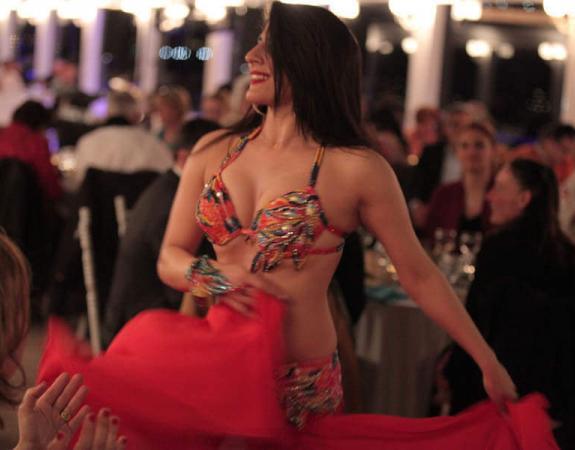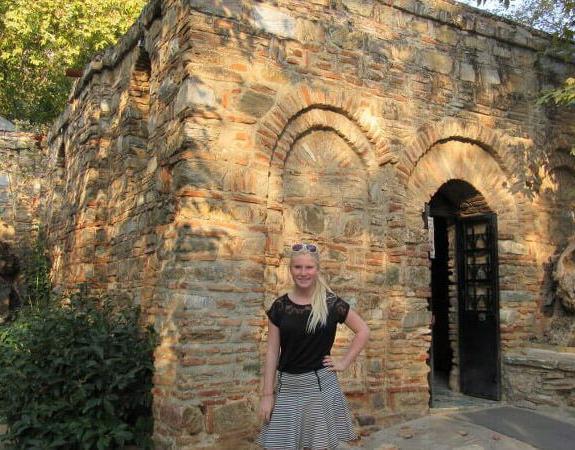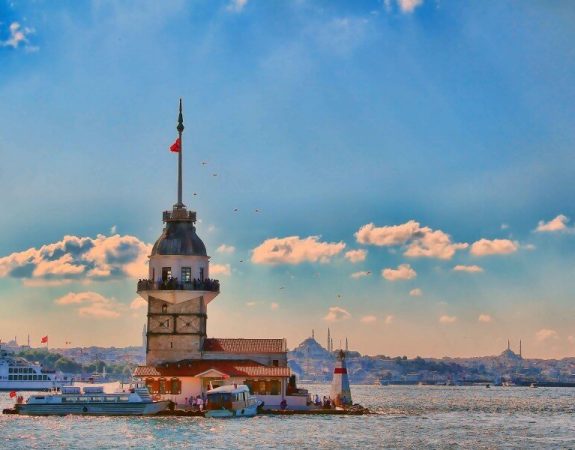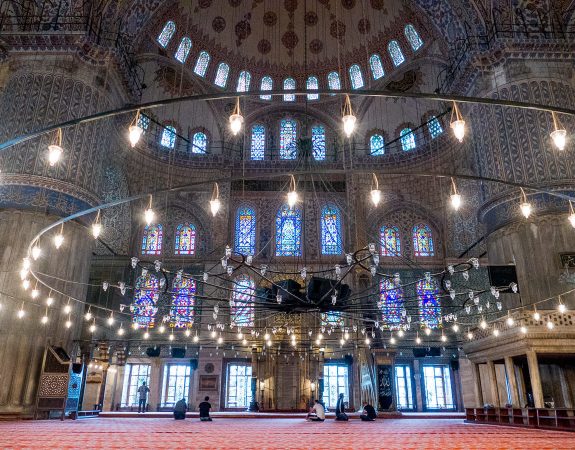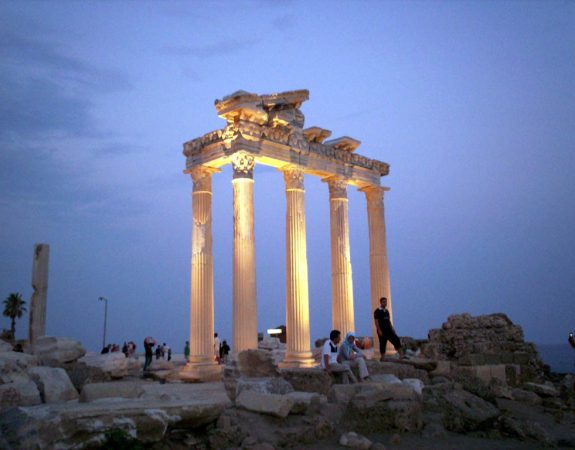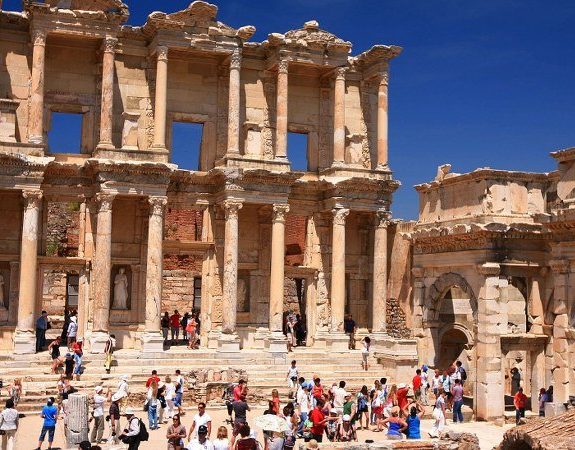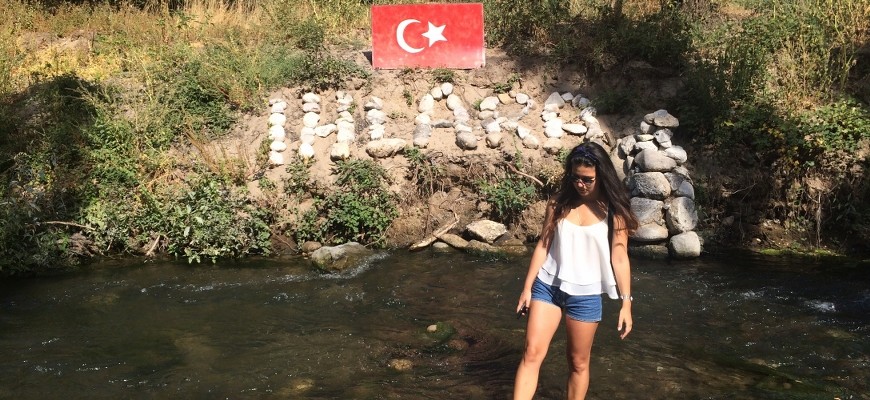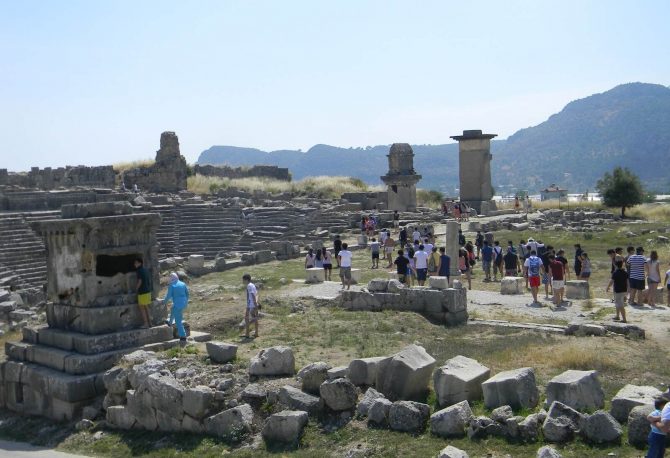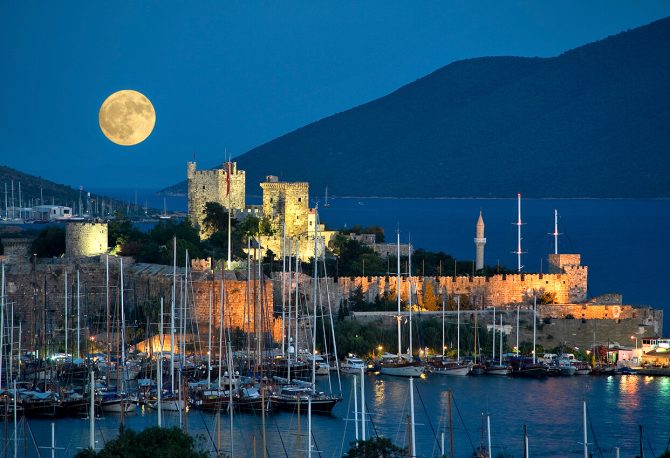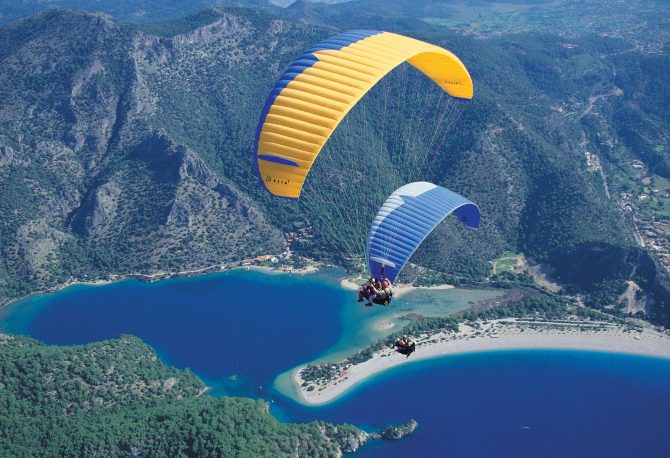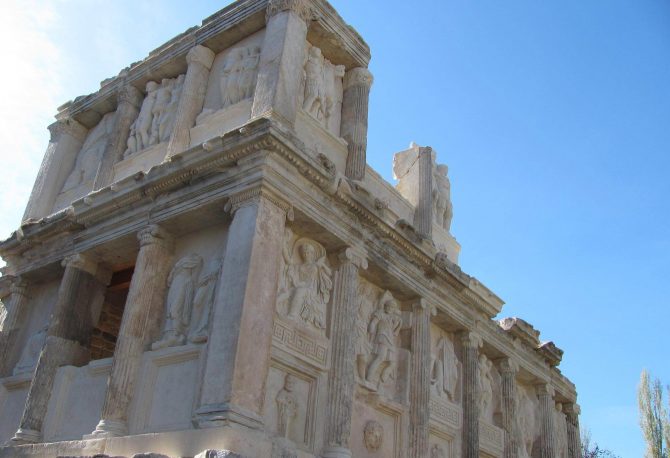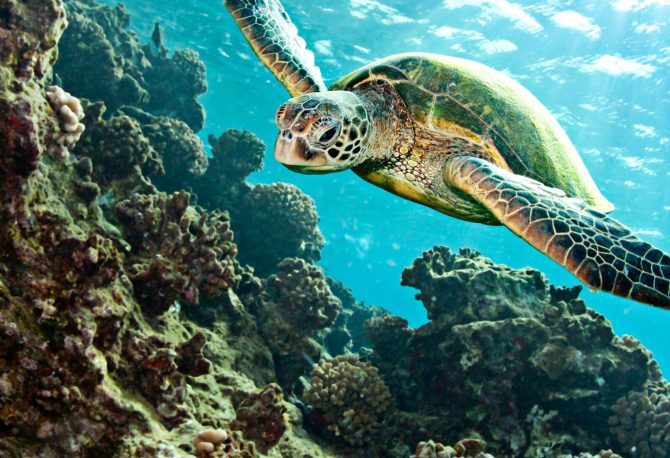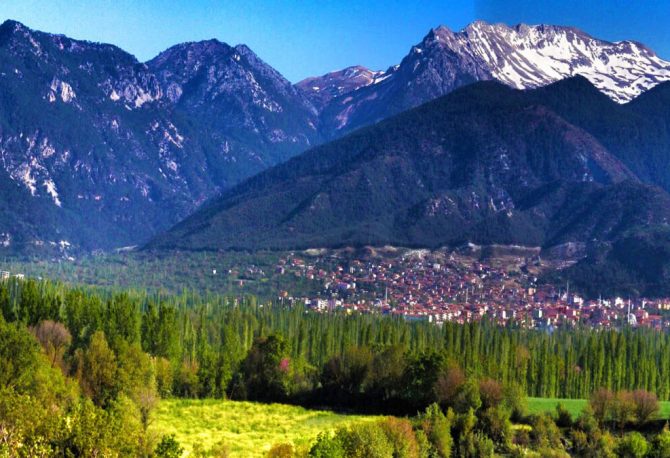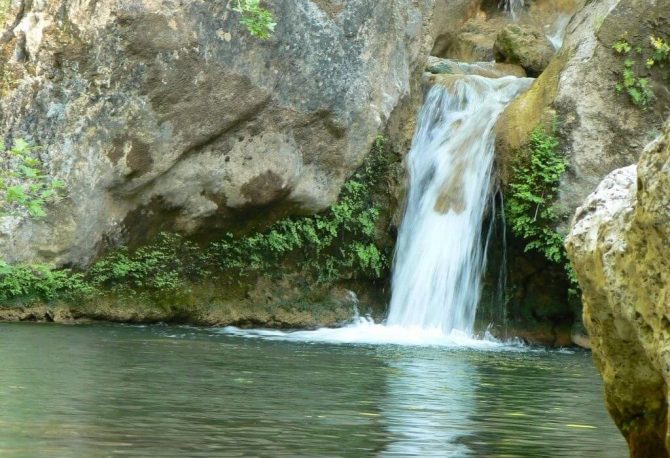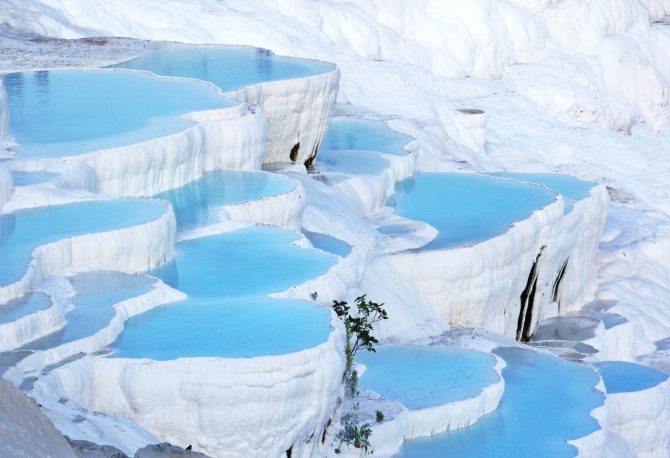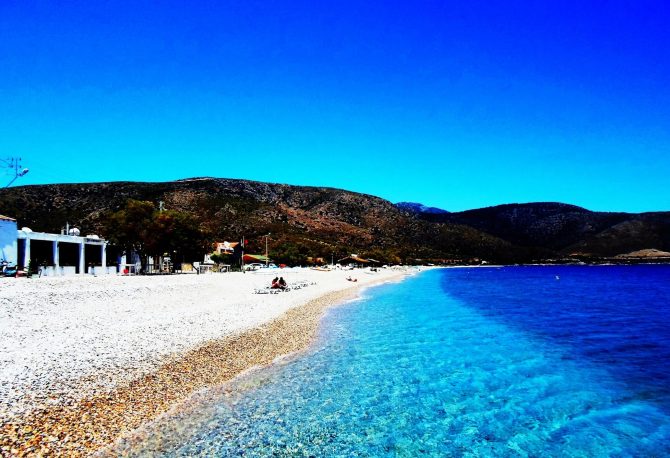Though this tiny, hard-to-reach village has a few cozy restaurants, its seemingly endless (13mi.) sandy beach is its main attraction. On the way to their daily beach worship, visitors marvel at the imposing ruins that lie peacefully among seaside hills. Remote sand dunes showcase the evening’s stars, while streetlights illuminate the mosquito-controlling bats’ next meal. The seat of the Roman governor of Lycia, Patara was an important port before its harbor silted up. It was also the birthplace of St. Nicholas, better known as Santa Claus.
To quote Istanbul designer Cemil İpekçi, met on Cumhuriyet Cad. after an evening of bacchanalian excess: “You can fall in love with anyone in Bodrum, but when you leave, it’s gone … it’s the Bodrum love.” With a reputation as the “Bedroom of the Mediterranean,” it’s easy to see why. Locals and visitors convene in time with the beat of music from countless dance clubs and bars that, provides the pulse for a city that comes to life at night.
As light dawns on lazy days, travelers make for the surrounding Acadian Peninsula, home to some of Turkey’s best beaches, secluded swimming coves, volcanic islands, and ancient ruins, with the persistence of Bodrum’s daily touristic rhythm keeping steady all the while. If music be the food of love, then it is the tourist lira that pays for it. Complete with one of the Seven Wonders of the ancient world, the 4th-century BC funerary monument to ancient Halicarnassus’ king Mausolus, and as many fake Gucci purses and “I LOVE BODRUM” mugs money can buy, Bodrum is a community in the grand tradition of beach towns. Turkish jet-setters, international yachtsmen, backpackers and package tourists mingle in the day’s sight-seeing, shopping, and water sports, searching the evening for “the Bodrum love.”
A big city with a small-town feel, Fethiye rests peacefully on a harbor surrounded by pine forests and mountains. Its inexpensive pensions and nearby islands make Fethiye a popular stop on the Mediterranean backpacker circuit. Most visitors take daytrips to Ölüdeniz, Butterfly Valley, Kayaköy, or Saklikent Gorge during the day and later on enjoy Fethiye’s winding streets and ancient Lycian rock tombs, whose remains line the surrounding mountains as well as the streets themselves. Integrated into the city’s center is a pleasant and orderly bazaar that stretches along the edge of the relatively understated harbor. Though a popular base for exploring the coast, Fethiye has managed to maintain a certain calm, leaving the most of the late-night carousing to Ölüdeniz, its wilder neighbor to the south.
Aydin was once Tralles, an important Roman scholastic town. Today, despite its palm-lined boulevards and multitude of mosques, Aydin is more worthwhile as a base from which to explore the ruins of Nyssa than as an attraction in itself.
Aphrodisias’s extensive ruins are surrounded by tobacco fields and framed by the majestic Baba Dağ Mountain range. Still very much under excavation, the site is expected by some archaeologists to eclipse Ephesus in grandeur after another 50 or 60 years. The site’s stadium is remarkably intact and impressive, and the museum is better in many respects than its counterpart in Ephesus.
The city has had nearly as many different names as the goddess Aphrodite, its Classical namesake, had lovers. Before its stint as the center of Greco-Roman worship of the goddess of love and fertility, Aphrodisias was named Ninoe, probably for Aphrodite’s antecedent, the Akkadian goddess of love and war. It was later known as Lclegonpolis, Megalopolis, and Plasara until it became the center for the cult of Aphrodite. The rise of the Byzantine Empire saw the city’s temples converted to churches, and the name to Stavropolis (City of the Cross), and later, Caria, from which the nearby modem village of Geyre probably takes its name.
Aphrodisias was well known as a center for astronomy, medicine, and mathematics, but above all as a showcase for sculpture. Chiseled from the famed white and bluish-gray marble quarried in the nearby foothills, the finer statues in the Roman Empire were often marked with an imprint from the celebrated Aphrodisian school, which is believed to have operated from the first century BC to the end of the 5th century AD. Under excavation since 1961 by a team from New York University, the modem site contains an enormous theater, an odeon, numerous temples, and the best preserved Roman stadium in the ancient world.
The placid, cobblestoned streets of Dalyan overflow with pleasant restaurants and tacky souvenir shops. The town seems to have grown naturally out of the breezy river beside it Lycian rock tombs built into the nearby cliffs are visible from the harbor, and thick reed beds teeming with wildlife are just minutes away. A short trip downstream leads to the ancient city of Kaunos and the tranquil Turtle Beach, where endangered sea tortoises are struggling to survive. The Dalyan shore has recently been declared a natural reservation.
Fourteenth century North African traveler lbn Battuta called Denizli “a most important town,” and today Denizli is the Aegean region’s fastest growing city after İzmir. Garbage-strewn streets and peipetual construction work at the out skirts of town give a bad first impression, but pleasant restaurants and parks line Atatürk Bul. and İstiklâl Cad. An overabundance of chicken statues commemorate Denizli’s ties to the poultry industry. Less touristed than nearby Pamukkale but far busier, Denizli offers a nice contrast, if only for a daytrip.
Home to various endangered species of birds, turtles, and rare gum-producing liquid amber trees, Köyceğiz is a peaceful town at the northern tip of tranquil Köyceğiz Lake. Though the town itself is a bit of an eyesore, travelers can take comfort in its shores to enjoy a quiet swim or a boat trip to the rejuvenating Sultaniye hot springs, the ruins of Kaunos, or Turtle Beach, or enjoy its surrounding mountains in a hike or a boating trip.
Whether as Pamukkale (Cotton Castle) or ancient Hierapolis (Holy City), this village has been drawing the weary to its thermal springs for more than 23 centuries. The Turkish name refers to the surface of the shimmering, snow-white limestone, shaped over millennia by calcium-rich springs. Dripping slowly down the vast mountainside, mineral rich waters foam and collect in terraces, spilling over cascades of stalactites into milky pools below. Legend has it that the formations are solidified cotton (the area’s principal crop) that giants left out to dry.
Overshadowed by natural wonder, Pamukkale’s well-preserved Roman ruins and museum have been remarkably underestimated and unadvertised; tourist brochures over the past 20 years have mainly featured photos of people bathing in the calcium pools. Aside from a small footpath running up the mountain face, the terraces are all currently off-limits, having suffered erosion and water pollution at the feet of tourists. While it is not open for bathing, the site is still worth a visit. Although many travelers come to Pamukkale only as a hasty daytrip from Kuşadası or Selçuk, you may want to consider spending the night in the village to best take advantage of its relaxing atmosphere and wealth of sights.
With its tranquil small-town atmosphere, Datça offers a more restful experience than the flashing disco balls and wild throngs of Bodrum and Marmaris. The dirt road to Datça twists along the mountainous Datça peninsula, providing occasional glimpses of an emerald string of deserted bays. The road to Datça along the slim, rugged Datça peninsula may be a bit terrifying, with ship turns and sheer drops, but determined visitors who brave the hair-raising ride will find hospitality, intimate nightlife, and beaches that are both less crowded and more beautiful than those at Bodrum and Marmaris. Small bars line the harbor, where boats lie waiting to depart to the ancient Dorian city of Knidos at the tip of the peninsula.


